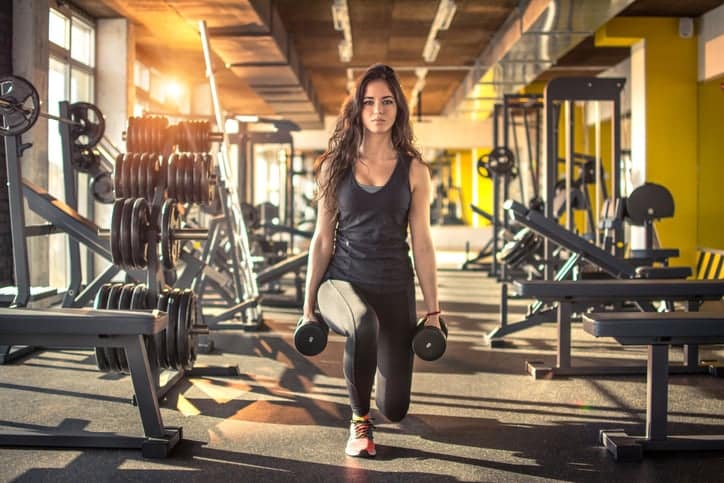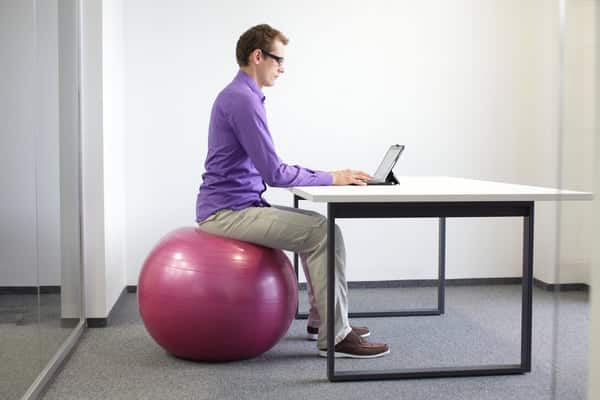Getting a strong core means moving beyond a simple ab and back routine and incorporating exercises that develop a strong core, and a stable power center. Your core is your engine of control through life. A strong base of support at the core of the body allows for better transfer of forces to the extremities when we are lifting, throwing, kicking, swinging, running, etc.. To truly train the core, a deeper understanding of core essentials including both the inner and outer musculature is necessary.
The muscles of the inner core include the transversus abdominis, pelvic floor, diaphragm, and quadratus lumborum and multifidi muscles. These muscles assist in stabilizing the spine and pelvis, and help minimize harmful rotational movement (O’Byrne, 2007).
The rectus abdominis, internal obliques, external obliques and erector spinae comprise the “outer core” – the global movers of the spine. The muscles of the outer core assist spinal flexion, lateral flexion, maintenance of an erect posture, and rotation of the trunk.
When training, it is important to utilize inner and outer musculature as you would in daily life, allowing natural mobility in bending, extending, rotating and stabilizing movement. Adding ball exercises to your core workouts is a great way to achieve this.
Some of the benefits of stability ball training include:
- Increased range of motion of the spine.
- Support of the lumbar curve enabling a greater range of resisted motion.
- Accommodation of all fitness levels by adjusting body position or manipulating balance challenge variables.
- Develops balance and strengthens deep stabilizing musculature.
- Enhances motor learning through neuro-receptor activation.
Because the core is the foundation for all movement, exercises that challenge the inner and outer unit in a functional manner are essential. A whole body workout plan which focuses on the core will develop a strong, stable inner unit and create a functionally fit body
Supine Trunk Curl
This exercise challenges muscular strength and endurance in the rectus abdominis and internal/external obliques as well as stability of the quadriceps, hip extensors and neck flexors
Begin lying supine on the ball with the lumbar spine centered, feet hip width apart on the floor. Flex the spine, pulling the ribs down toward the hips. Hold then slowly return to the start.
Teaching Tips:
- Stabilize the neck and pelvis–instability in these areas is the most common problem and it needs to be addressed initially.
- Avoid thrusting the body forward and control your eccentric (lowering) movement.
- The ball should not move.
Variation:
- Resistance challenge: Add the arms by placing the hands behind the head.
- Balance challenge: Lift one leg.
Oblique Curl:
Stagger the feet slightly and slightly rotate the hips to one side.
Place one arm to the side. Anchor the lower hip into the ball. Think of moving the ribcage diagonally in the direction the legs are pointing (right elbow to right inner thigh).
Dynamic challenge: Roll ball side to side
Lateral Trunk Flexion:
This exercise targets the obliques and quadratus lumborum. It is a great way to work on side-lying balance, and stabilization in the core, hip, pelvis, neck and lower body.
Begin in the side-lying position with the hips firmly pressed into the ball. Adjust the distance between your legs for an appropriate balance challenge.
The wider your legs, the more stable you will become. Place your hands behind your head and lower the torso toward the floor until you feel a slight side stretch. From this position, laterally flex away from the floor focusing on drawing the bottom of the ribcage closer to the hip. Hold at the top then control as you lower down.
Teaching Tips:
- Repeat on both sides
- Find neutral cervical alignment and maintain this position throughout the movement.
- Initiate movement from the trunk avoiding neck pull.
- Prevent movement of the hips and shoulders forward and back.
- Move slowly through this range of motion.
Variations:
- Resistance and balance challenge: Extend the arms overhead or place them behind the head. Extend the legs. Add hip abduction of the top leg.
- Modification: Anchoring the feet on the wall is very effective for this exercise. It will allow you to position the body forward for more resistance and a greater range of motion.
Trunk Extension with Rotation
The focus of this exercise is to challenge muscular endurance and strength in the spinal extensors and deep lumbar rotators as well as prone balance, core, lower body and shoulder girdle stabilization.
Begin kneeling on the floor with your torso draped prone over the ball, hips and abdomen centered hugging the ball with your forehead resting against the back of your hand. Gently press the pelvis into the ball and slowly extend spine. Continue extension as you rotate the trunk to one side, keeping the elbow open and scapulae gently retracted. Slowly lower down.
Teaching Tips:
- Alternate sides.
- Drive movement from the lumbar spine and avoid momentum.
- Imagine there is a tennis ball tucked under the chin—don’t drop it!
- This exercise is not about lifting the trunk but rather extending the spine.
Variation:
- Resistance and balance challenge: Narrow the base (place the knees closer together) and lift the arms straight ahead.
- Balance challenge: Lift the knees off the floor.
Remember to begin new exercises with the easiest balance position and encourage controlled movement at all times. Progress as you master the exercise by manipulating balance challenge variables (reducing points of contact, changing focal point, adding movement or external stimulus such as a weighted ball or dumb bell). As you progress to more challenging positions decrease range of motion until the new motor pattern is learned.
Anchor the pelvis when training trunk mobility and maintain a neutral spine position when training trunk stability. Be aware of your breath and make sure participants know how to safely transition from one body position to another on the ball. Proficiency in appropriate progression will make workouts safer, more enjoyable and appropriate for all participants. Balance training on the ball should meet individual ability and challenge without significantly increasing risk of injury or compromising technique.
Author:
Carol Murphy , a 2008 & 2009 Finalist for IDEA Instructor of the Year is the National Programming Director for Resist-A-Ball®, the Education Director for Drums Alive USA and Canada, a Master Trainer for Body Bar, Drums Alive and Gliding. Her certifications include ACSM (American Council on Exercise), NASM (National Academy of Sports Medicine), ACE (American Council on Exercise), AFAA (Aerobics and Fitness Association of America) and CanFitPro. Known for her infectious energy, results oriented workouts and passion to make fitness fun- Carol’s innovative classes and fitness training programs have been featured in numerous DVDs, magazines and at conventions world-wide.
References:
Morris, Mike, Krista Popowych, Hard Core Resist-A-Ball, CanFitPro, November/December 2007
Morris, Stephanie, Hard Core with Resist-A-Ball workout DVD, September 2007
O’Byrne, Suzette. 2006: Yoga for the Core- Finding Stability in an Unstable Environment. Functional Synergy Press.
Morris, Mike, Morris, Stephanie and Carol Murphy. 2009: Resist-A-Ball Instructor Manual. Madd Dogg Athletics, Inc.
Contact Information:
Website: www.carolmurphy.com
Email: murphfit@rochester.rr.com



